If you can’t find a classy look in microphones that gives you the feeling of Al Pacino’s ‘God Father’ theme, you may need to divert your attention to the vintage mics. But before you do that, keep in mind that some models are discontinued, some still exist today since day one, and some are recreated versions of the discontinued models.
So, if you are already in search of antique and unique mics, but have no luck finding them yet, you’re on the right page.Â
Here, you will find the 15 best vintage microphones with key specifications, features, pros and cons. The article sheds light upon discontinued and recreational products. You can also take a quick look at the comparison table to get quick knowledge of your favorite microphone about their estimated pricing, frequency response, and more.Â
So let’s get started!
Comparison Table – 15 Best Vintage Microphones
| Original Mic | Price of Original Mic (Estimated) | Mic Type | Polar Pattern | Sensitivity | Frequency Response | Connectivity | Recreated Models | Price of Recreated Models (As on Amazon) |
| Neumann U47 | Used: Starting from $17,000 | Condenser | Omnidirectional and Cardioid | 2.5mV | 30Hz to 16kHz | Tuchel | No | N/A |
| RCA 44-BX | Used: Starting from $3,500 | Ribbon | Bi-Directional | N/A | 30Hz to 15kHz | 3-pin XLR | No | N/A |
| ELA M 251 | N/A | Vacuum Tube Condenser | Figure-8, omnidirectional, and cardioid | N/A | 20Hz to 20kHz | 3-pin XLR | Yes | N/A |
| AKG C12 | N/A | Condenser | 9 polar patterns, including cardioid, Figure-8, and omnidirectional | 19mV/Pa | 30Hz to 20kHz | 3-pin XLR | Yes | $7,199 |
| Electro-Voice RE20 | New: $449 | Dynamic | Cardioid | 1.5mV/Pa | 45Hz to 18kHz | 3-pin XLR | Original is available* | Same as the original product* |
| Beyerdynamic M160N | N/A | Ribbon | Hypercardioid | N/A | 40Hz to 18kHz | 3-pin XLR | Yes | $577.09 |
| Coles 4038 | $2,963 | Ribbon | Bi-Directional | -65dB | 30Hz to 15kHz | XLR 3-pin male analog | Original is available* | Same as the original product* |
| Sennheiser MD 421-2 | Used: Starting from $250 | Dynamic | Cardioid | N/A | 30Hz to 17kHz | Tuchel | Yes | $429 |
| Shure SM7 | N/A | Dynamic | Cardioid | -59dBV/Pa @ 1kHz | 50Hz to 20kHz | 3-pin XLR | Yes | $399 |
| Neumann U 67 | N/A | Condenser | Figure-8, cardioid, and omnidirectional | N/A | 20Hz to 20kHz | 3-pin XLR | Yes | $7,495 |
| RCA 77-DX | Used: Starting from $3,000 | Ribbon | Figure-8, cardioid, and omnidirectional | N/A | 30Hz to 20kHz | 3-pin XLR | No | N/A |
| AKG C414 EB | Used: Starting from $2,200 | Condenser | Omnidirectional, Figure-8, hypercaridoid, and cardioid | N/A | 20Hz to 20kHz | 3-pin XLR | No | N/A |
| Sennheiser MD 441-U | New: $1,049 | Dynamic | Supercardioid | 1.8mV/Pa | 30Hz to 20kHz | 3-pin XLR | Original is available* | Same as the original product* |
| Hollyland Lark M2 | New: $159 | Wireless Lavalier | Omnidirectional | -37dBV +/- 2dB | 20Hz to 20kHz | USB and 3.5mm jack | Original is available* | Same as the original product* |
15 Best Vintage Microphones of All Time
Here are the 15 best vintage microphones with a proven history of next-level performance.
1. Neumann U 47

The first vintage mic to start with is the Neumann U 47. It is one of the finest creations from the manufacturer’s post-World War II era. While Georg Neumann already launched a variety of microphone models in the past, he focused on producing the iconic U 47 instead of upgrading the old models. That’s one of the reasons why the Neumann U 47 has a power tube technology.Â
One of the impeccable features of this vintage microphone is the toggle switch for changing polar patterns. This was something new to the world in the post-war era. The Neumann U 47 allowed users to select polar patterns, waving off the need for replacing the capsule head to assign a new pattern to the microphone.
Even though the Neumann U 47 is discontinued, its signal-to-noise ratio is still cherished by many professional singers, bands, musicians, and audio engineers. No wonder why it remained a constant choice for some of the greatest rock bands like the Beatles.Â
Today, Neumann U 47 has become the Telefunken U 47, which has almost similar qualities, features, and even appearance. However, the specifications are upgraded. For instance, the Telefunken U47 has a frequency response of 20Hz to 20kHz, which is different from the original. When Neumann began manufacturing products, Telefunken served the company as the main distributor of Neumann microphones in the US. Since the original Neumann U 47 has been discontinued, users prefer buying the Telefunken version as a replacement.Â
So how does the real Neumann U 47 sound? Distinct with unmatched resonance and depth for capturing nuances of voice hassle-free.Â
Key Specifications of the Neumann U 47
- Tuchel connector type
- 30Hz to 15kHz frequency response
- 2.5 mV microphone sensitivity
- Omnidirectional and cardioid polar patterns
- 50 – 250 Ohms switchable output impedance
- 25 dB front and back noise rejectionÂ
Pros
- U 47 has powerful low frequencies
- The proximity effect is quite noticeable
- The vocals can cut through the audio mixes without a hitch
Cons
- It may sound edgy or nasal, especially at the midrange
- Some experienced users think that sometimes the microphone has a telephonic audio
Price
- Discontinued – You may purchase a second-hand/used U 47 at an estimated starting price of $17,000.
2. RCA 44 Series (RCA 44-BX)
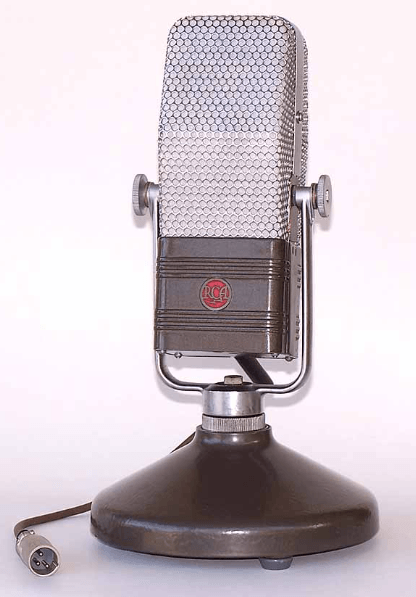
The next vintage microphone in the spotlight is the RCA 44-BX from the RCA 44 series, which will surely take you back to the AM’s golden era. Made in the 1930s, the design of this microphone is still an unparalleled choice to fulfill traditional audio recording requirements. It is a ribbon microphone that can capture the essence of sound. This gem was discontinued back in the mid-1950s but left a dent in the music industry due to its melodious sound reproduction quality.Â
Its unique silhouette and appearance set the stage on fire by legendary artists like Frank Sinatra and Elvis Presley. This microphone is known for its crystal highs, delicate midrange, and rich bass. That is why, despite being unavailable, the RCA 44-BX continues to play in parts for vintage-style vocal recordings.Â
Key Specifications of RCA 44-BX
- 3-pin XLR connectivity
- Bi-directional polar pattern
- -55 dBm output level @ 100 cycles
- 10 dynes/cm2 sound pursue a level
- 30Hz to 15kHz frequency response
- Multiple output impedance (90, 150, and 250 Ohms)
Pros
- Ideal to be used for vocals, as well as drums
- The mic works exceptionally with tube preamps
- It reproduces an excellent organic, detailed, and ambient sound
Cons
- If a high-quality preamp is not connected to this mic, you won’t be able to experience its full potential
Price
- The microphone has been discontinued. You may find used versions with a starting price of around $3,500.
3. ELA M 251
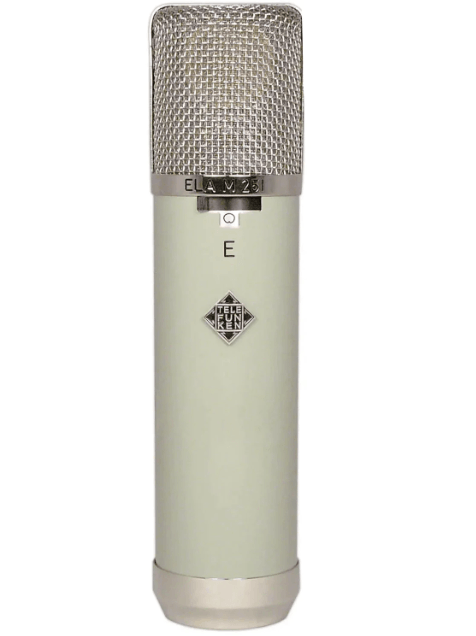
The original ELA M 251 stands as a symbol of craftsmanship when it comes to vintage microphones with compelling value and rarity in the industry. The microphone was made after being inspired by the AKG C12 in collaboration with Telefunken and Viennese microphone experts in the 1950s.Â
The original ELA M 251 comes equipped with a 6072 vacuum tube, CK12 capsules, and a Haufe T-14/1 transformer. This mic has a superb sonic character that has captured the attention of sound engineers over the generations.Â
Currently, Telefunken produces the ELA M 251E, the redesigned version of the original ELA M 251, by ensuring the same characteristics as the original.
Key Specifications of the ELA M 251
- XLR connectivity
- 85dBA signal-to-noise ratio
- 200 Ohms output impedance
- 20Hz to 20kHz frequency response
- Vacuum Tube Condenser microphone
- Figure-8, omnidirectional, and cardioid polar patterns
Pros
- It offers consistent performance even in modern-day recordings
- The original ELA M 251 has a remarkable sound with outstanding articulation, depth, and balance across vocals and instruments
Cons
- The used ELA M 251 is hard to find
- No hint of pricing for the original ELA M 251 available
Price
- N/A
4. AKG C12
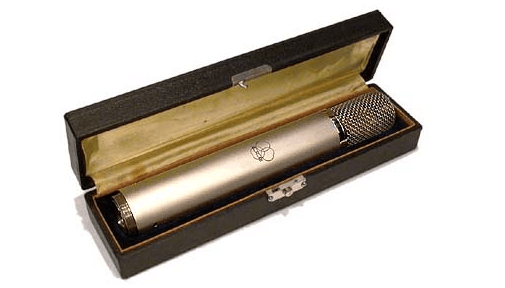
In the 1950s, the world experienced an excellent microphone, the AKG C12, that quickly gained a high reputation among the competitors of that time and reshaped the sound industry. The C12 has a different appearance and design along with top-notch audio quality that made it the first choice of many professional recording artists and engineers.
The AKG C12 is known for its outstanding warmth and clarity. The credit goes to the large-diaphragm condenser capture that captures nuances with accuracy. But that’s not it! This microphone also has an amplifier tube that brings sonic characteristics to the audio and makes it smoother without changing the originality.Â
The AKG C12 can be used for both vocals and instruments since it is capable of reproducing each note with high-level correctness. That is one of the reasons this microphone is used by expert sound engineers to record all major frequencies.Â
What’s more? The attractive slim body is topped with professional-grade grille. This kind of matchless design at that time inspired several modern microphone manufacturers. And still today, the AKG C12 is a highly appreciable vintage microphone among users.Â
Key Specifications of the AKG C12
- 3-pin XLR connectivity
- 10mV/Pa microphone sensitivity
- 30Hz to 20kHz frequency response
- Multiple polar patterns, including omnidirectional, cardioid, figure-8, and six other (names unknown)
Pros
- This microphone can be used to record vocals, brass, and string instruments
- It has a durable body that can last for years
Cons
- The internal components of this microphone are delicate – you need to handle this microphone with extra care
Price
- The original AKG C12 is discontinued. The recreated AKG C12 VR is available for $7,199 on Amazon
5. Electro-Voice RE20
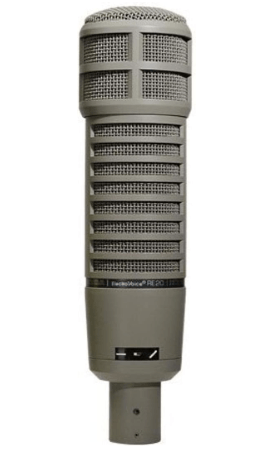
While most vintage microphones are either discontinued or available as recreational products by the same manufacturers, the Electro-Voice RE20 is still available since 1968. Since its launch, this microphone has stayed firm with its functionality, features, and specs. This vintage dynamic microphone has a cardioid pattern that offers low noise and reliable performance while ensuring high clarity for each note.Â
From recording vocals, the Electro-Voice RE20 has proven its mettle several times. This mic can effortlessly handle the proximity effect and has a flat frequency response, making it suitable for all types of vocalists, especially those who haven’t found the microphone technique yet.
Likewise, the Elector-Voice RE20 can easily manage EQ adjustments. And because it has an impeccable off-axis rejection, this microphone is also a popular choice for live events, as it can capture clean audio without modifying the originality of the tone. That is why this microphone is also widely used for kick drums.Â
Moreover, the Electro-Voice RE20 has an integrated wind and blast filter ready to fight popping sounds and unwanted wind noises.
Key Specifications of the Electro-Voice RE20
- -130 dBm hum pickup
- True cardioid polar pattern
- 45Hz to 18kHz frequency response
- 150 Ohms impedance (balanced)
- 1.5mV/Pa microphone sensitivity
Pros
- Very durable microphone that can last for years if handled with care
- It has an excellent sound quality that can capture midrange frequencies with high clarity
- Most importantly, this microphone has been a trusted device by professionals since 1968
Cons
- Users complain that the shockmount is too big and causes difficulty in setup
Price
- $449.00 (As seen on Amazon)
6. Beyerdynamic M160N
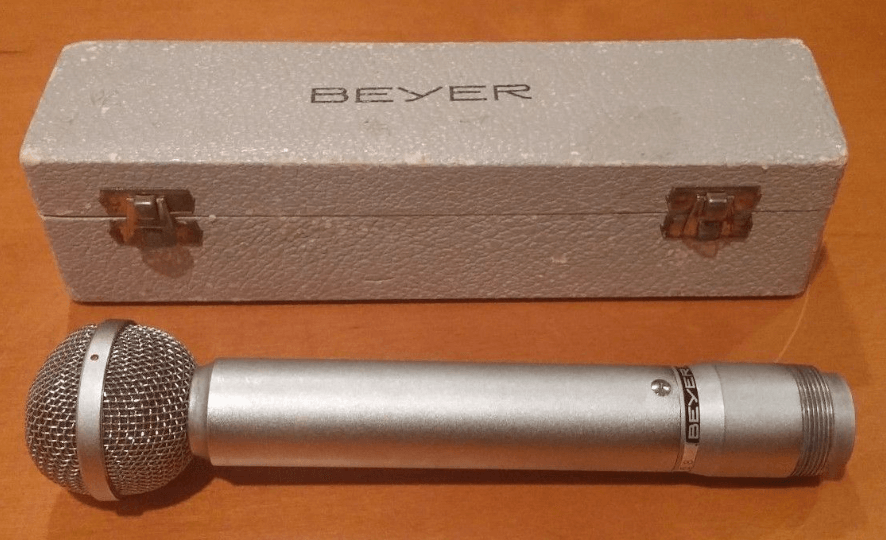
The Beyerdynamic M160N is a 1950s/60s ribbon microphone that has been a companion of many famous vocalists and sound engineers. This mic comes with a double-ribbon design housed in a durable body, making it long-lasting for years. This vintage microphone captures clean audio with sheer warmth in the tone, which is why artists adore this magnificent piece of engineering.Â
The old Beyerdynamic M160N just weighs around 156 grams (approx.) making it a lightweight microphone that can be carried in a beautiful small box. The mic has impeccable performance in both live and studio settings.Â
Moreover, the Beyerdynamic M160N can regenerate natural sounds with accuracy. Then there’s the smooth frequency response that works as a sugar on the cake. Both these traits make this microphone sound wonderful and rich in vocals, guitar amps, drums, and many more.Â
Although the original Beyerdynamic M160N was discontinued long ago, admirers still have this vintage microphone safe and sound it in their recording studios.
Key Specifications of the Beyerdynamic M160N
- Dynamic ribbon mic
- Hypercardioid polar pattern
- 40Hz to 18kHz polar pattern
- 3-pin XLR connectivity
Pros
- It is a compact and lightweight microphone
- The sound is perfect for voiceovers and mid-pitched vocals
Cons
- It may not be able to handle high sound pressure levels
Price
- The original Beyerdynamic M160N is not available anymore. You can still get the reimagined version “M160†by the same company for $577.99 on Amazon.
7. Coles 4038
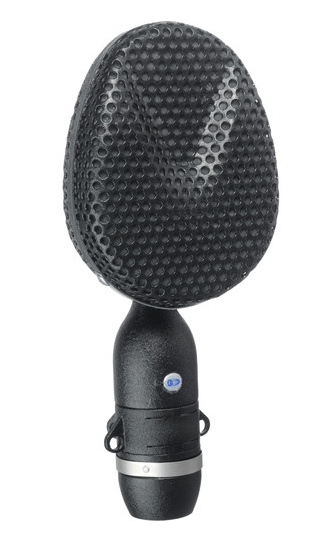
The Coles 4038 is a renowned ribbon microphone made in the 1950s or 1960s under the supervision of the BBC. This signifies that the microphone is made for broadcasting purposes. And guess what? Since its inception, this vintage mic has never been discontinued, and you can still get it brand new with the same original specs. That’s unlike other microphones, such as RCA, that were discontinued but are back with a redesign and changes in the traits.Â
The Coles 4038 has a flat frequency response for accuracy in the reproduction of audio. The mic has a bi-directional (Figure-8) polar pattern that lets you capture sound from front and back with equality.
Key Specifications of the Coles 4038
- Mono sound field
- Ribbon microphone
- 30 Ohms impedance
- -65dB microphone sensitivity
- 30Hz to 15kHz frequency response
- 1x XLR 3-pin male analog output
Pros
- This is one of the best microphones for capturing audio in the 1960s style
- Whether you record vocals or instruments, this vintage microphone ensures keeping their level up against added sound effects
Cons
- This microphone doesn’t sound bright – you can expect a darker sound
- It comes with an old connectivity, which may puzzle the modern-age user during the setup and they may require an adapter
Price
- $2,963.00 (Price of Coles 4038 pair on Amazon)
8. Sennheiser MD 421-2
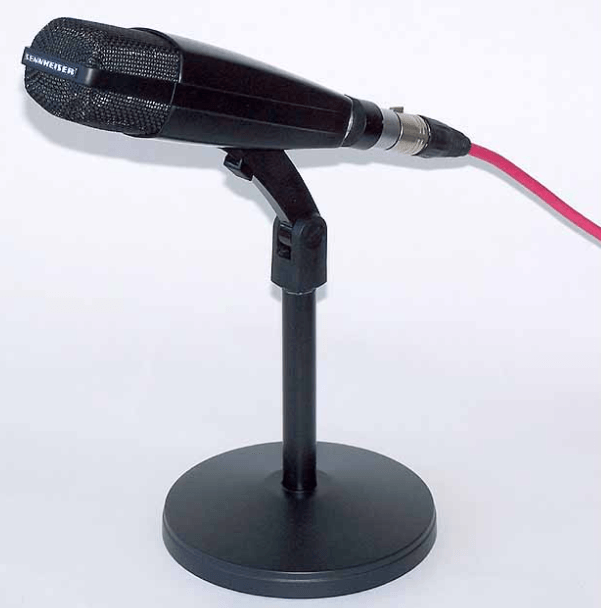
There is no second thought when it comes to agreeing with the performance and reliability of the Sennheiser MD 421-2. Released in 1960, this microphone has excellent quality, making it applicable for vocals and instruments. It is widely used in broadcasting stations and televisions. Moreover, the musicians of today still prefer it for live and studio recordings.Â
The Sennheiser MD 421-2 is a cardioid vintage microphone with a broad range of frequency response of its time. The ingredients, that make this microphone a brilliant audio-capturing device are high sensitivity and the ability to handle high sound frequencies.Â
Back then, Sennheiser released three different variants of MD 421, and among all these MD 421-2 has a tuchel connector. Well, that’s true evidence that this microphone is old-school.
If you want to grab this MD 421 today, you have two options. First, get it in a second-hand condition, or order a new recreated version from Sennheiser. However, the redesigned model has different specifications than the original one.
Key Specifications of Sennheiser MD 421-2
- Tuchel connector
- Cardioid polar pattern
- 200 Ohms impedance
- 30Hz to 17kHz frequency response
Pros
- It reproduces warm sound
- The mic has a solid construction
- The off-axis rejection is outstanding
Cons
- It has a very rare connector and you may need to invest time in finding the adapter to make the mic functional
Price
- Sennheiser MD 421-2 is discontinued. The price of the redesigned Sennheiser MD 421-II is around $429.00 on Amazon
9. Shure SM7
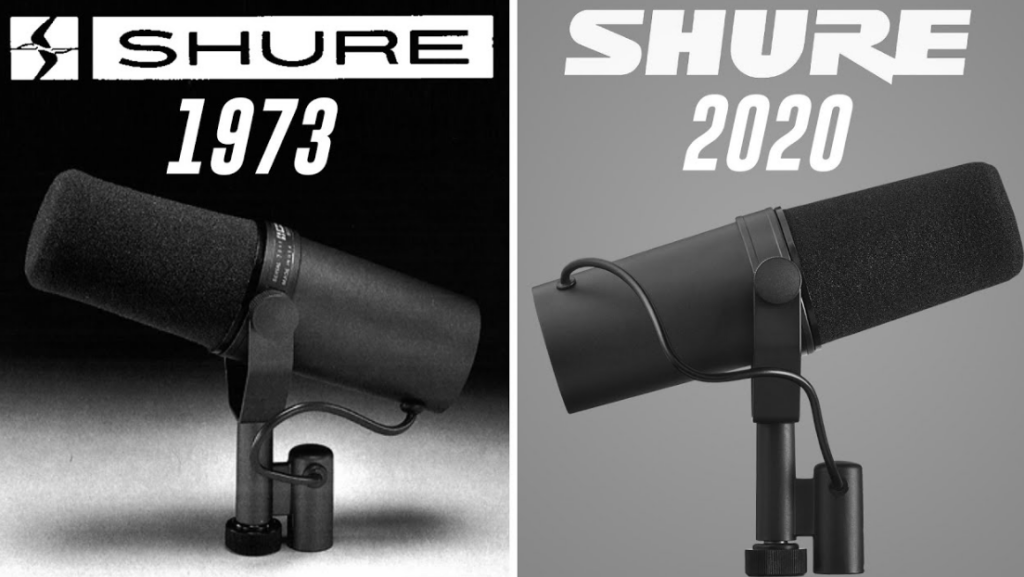
If you have heard of the Shure SM7B, you have heard about the second upgrade of the Shure SM7 that was first released in 1973. This is an iconic vintage microphone at this present time. The SM7’s main purpose is to record speeches and vocals, and it has been doing quite well on these tasks.Â
Being the successor of SM5 and SM57, the Shure SM7 is the only model that has been recreated twice. The first update was made in 1999 by adding a humbucking coil. The second update was made in 2001 by including a windscreen.Â
The Shure SM7 is a true professional dynamic cardioid microphone that is still in use for broadcasting. While the original SM7 is unavailable, you can still go for the Shure SM7B if you want to try the updated version since the key specs are almost similar to the vintage version.
Key Specifications of the Shure SM7
- 3-pin XLR connectivity
- 150 Ohms impedance
- Cardioid polar pattern
- Dynamic microphone type
- 50Hz to 20kHz frequency response
- -59dBV/Pa @ 1kHz microphone sensitivity
ProsÂ
- The SM7 vintage is a reliable microphone for its audio quality
- It suits all recording applications be it vocals, guitars, or streams
- Despite an old mic, it effectively rejects unwanted background noises
Cons
- SM7 lacks controls on its design
- Since it is an old microphone, it requires high gain from an excellent preamp to provide optimal performance
Price
- The Shure SM7 has been discontinued. You can find the latest version in the form of Shure SM7B which is priced at around $399.00 on Amazon
10. Neumann U 67

The Neumann U 67 was originally designed in 1960 and soon became the symbol of amazing audio quality. The popularity made this microphone a go-to choice for most professional audio engineers. However, the microphone was discontinued a few years later and reborn after several decades. According to the company, the new version of the Neumann U 67 has everything the same as the vintage one, except for the power components. They are safer than before.
The Neumann U 67 (the real version) is a universal mic that suits all recording scenarios. It can be one of the best options for recording vocals due to the smooth edge design with a tube shimmer. And since it has multiple polar patterns, it can be used to record piano, drums, brass, strings, electric guitar, and bass.
Key Specifications of the Neumann U 67
- 3-pin XLR connectivity
- 124dB Max SPL
- 200 Ohms impedance
- 20Hz to 20kHz frequency response
- Figure-8, cardioid, and omnidirectional polar patterns
Pros
- The mic is brilliant at capturing loud sounds without distorting them
- Due to the 200 Ohms impedance, this microphone can be used with the latest audio equipment
- You can also increase the audio quality of this microphone by connecting it to a 48V Phantom power
Cons
- This vintage microphone requires careful placement otherwise it may pick up unnecessary sounds
Price
- Â The original U 67 (1960) is unavailable. Instead, you can look for the upgraded Neuman U 67 Set with a few differences in the components priced at $7,495 on Amazon
11. RCA 77-DX
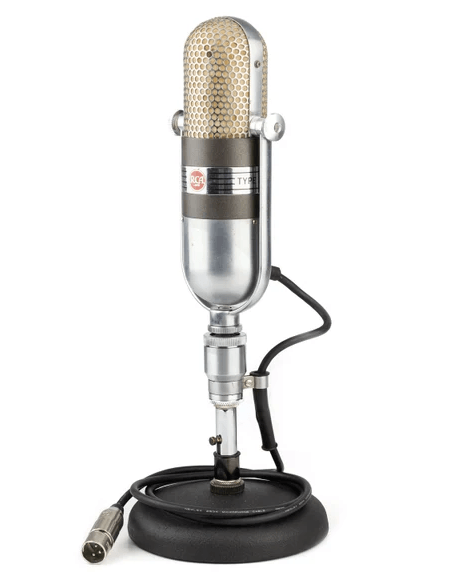
The RCA 77-DX is another addition to the ribbon microphones, making itself a prominent vintage device for capturing broadcast-grade audio. The microphone was launched in the mid-1950s and discontinued in the late 1960s. But is this microphone only good for reading the news and interviewing presidents like Larry King and Vladimir Putin in 2000 with an RCA 77-DX vintage mic set between the table?
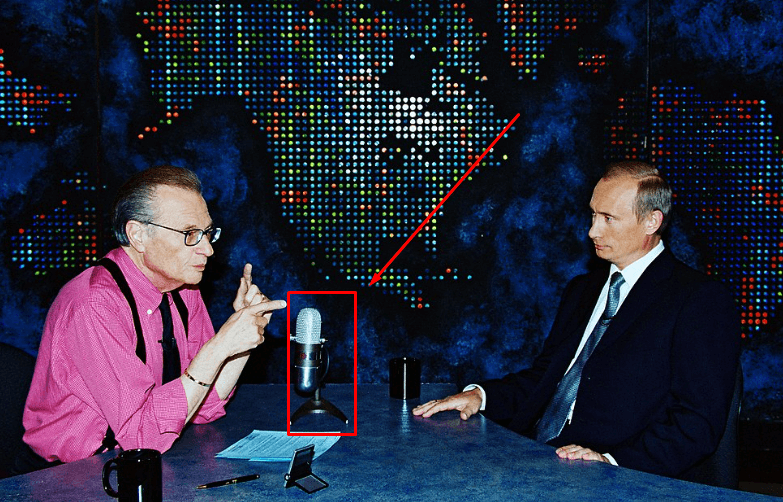
Nope! This vintage microphone can also be used for vocal recordings. In fact, famous singers like Johnny Cash and Bing Crosby, have used it for their hit songs. Sadly, there’s no updated version available. But you can find the second-hand piece on several marketplaces for a price starting from $3,000.
Key Specifications of the RCA 77-DX
- 3-pin XLR connectivity
- Up to 250 Ohms selectable impedance
- 30Hz to 20kHz frequency response (estimated)
- Omnidirectional, cardioid, and Figure-8 polar patterns
ProsÂ
- The mic still has one of the widest frequency range
- It has shutter adjustments to control polar patterns
- Strong presence in the media and tested by several renowned artists and presenters
Cons
- Some users think that this microphone has a complex setup and functionality
Price
- Neither the old version is available nor there’s any updated version released. The used product may be around $3,000 (starting price)
12. AKG C414 EB
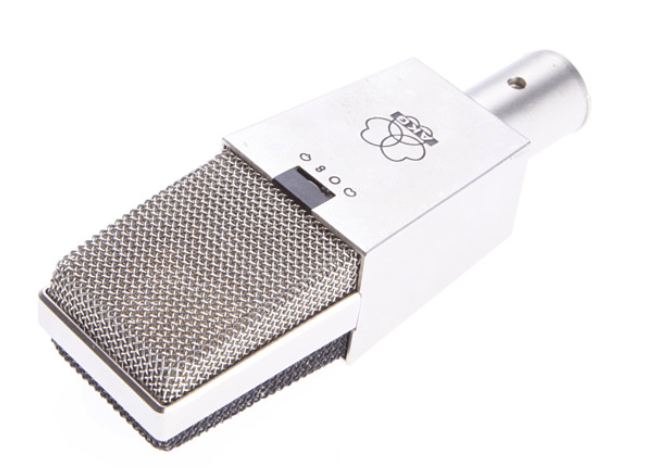
The AKG C414 EB is a decent vintage microphone for its age. Since its launch, it has been greatly praised for handling high audio frequencies with slight sibilance. Moreover, this mic is known by the name of workhorse among studio engineers due to its multiple polar patterns and superb audio capturing and reproducing capabilities.
Like many other vintage mics in this list, the company stopped manufacturing the AKG C414 EB and there are no signs of any redesign. However, many users agreed that the used C414 EB is quite expensive.Â
Key Specifications of the AKG C414 EB
- 20dB Max SPL
- Twin-condenser diaphragm
- 20Hz to 20kHhz frequency response
- 6mV/Pa microphone sensitivity
- Up to 500 Ohms impedance
- 3-pin XLR connectivity
Pros
- It reproduces natural and detailed notes without coloration
- The AKG C414 EB has a euphoric sound that’s hard to find in the latest microphones
Cons
- Some users complain about distortion in the vocals when recorded through these vintage mics
Price
- Original unavailable. Used AKG C414 EB price may start from $2,200
13. Neumann KM 84
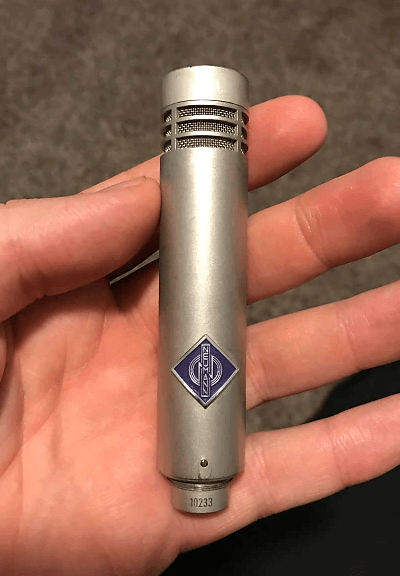
The Neumann KM 84 is another historical vintage microphone with a small diaphragm but extraordinary performance. It also has the honor of being the world’s first microphone to work with 48V DC Phantom power.Â
The Neumann KM 84 took the world by storm until 1992 when the company decided to close the production and focus on new models. This microphone is still being used in many recording studios to record all genres of music. Because it is known for having a flat frequency response and is capable of maintaining the effect of cardioid pattern throughout the frequency spectrum.Â
Key Specifications of Neumann KM 84
- Cardioid polar pattern
- 130dB Max SPL
- Tuchel connectivity
- 150 Ohms impedance
- 40Hz to 20kHhz frequency response
Pros
- Small size
- It is suitable for multiple applications
- This mic is great at avoiding background noises
- Due to low impedance, it can transfer good audio signals
Cons
- People dislike the self-noise factor that can disrupt the recording
Price
- N/A – Used product may be around price around $1,500 to $4,661 range
14. Sennheiser MD 441-U
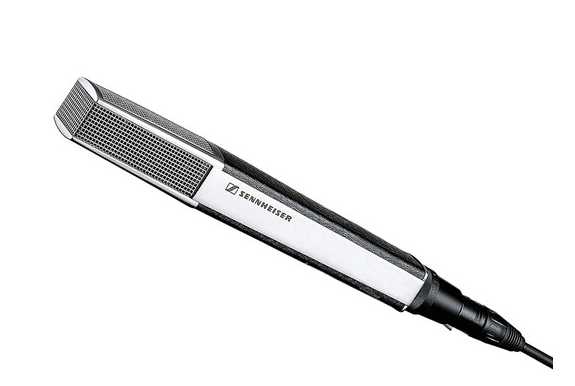
Known for having distinctive looks and dark audio quality, the Sennheiser MD 441-U has been used by some of the greatest legends, including Elton John and David Bowie. While the mic is still available, you can count it under the list of the best vintage microphones. Why so? Because it was launched in 1971 and the production is in continuation.Â
The Sennheiser MD 441-U consists of a supercardioid polar pattern with impressive off-axis rejection caused by room ambiance, handling and mechanical noises, studio monitors, and more. It has several interesting features, such as the 5-position roll-off for bass and the 2-position contour for high frequencies.
Key Specifications of the Sennheiser MD 441-U
- Dynamic microphone
- Supercardioid polar pattern
- 30Hz to 20kHz frequency response
- 3-pin XLR connectivity
- 200 Ohms impedance
- 1.8mV/Pa microphone sensitivity
Pros
- It looks delicate but has a robust construction
- This vintage microphone always remains faithful to the audio source
- The microphone also offers accurate sound reproduction for kick and snare
Cons
- The mic may not suit your preference if you are interested in recording bright vocals
Price
- $1,049 (As seen on Amazon)
15. Hollyland Lark M2

The Hollyland Lark M2 is not a vintage microphone. In fact, it is the latest creation by Hollyland with mind-blowing features. This wireless microphone can serve as an excellent alternative if you think your favorite vintage mic can break the bank at the moment.
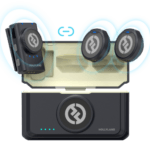
Hollyland Lark M2
2-Person Wireless Mini Button Microphone.
Learn MoreThe Hollyland Lark M2 comes with 1x RX and 2x TX units so you can wirelessly record audio up to 300 meters. The battery life is also marvelous and gives you the freedom to capture audio for up to 40 hours when used with the charging box.Â
The Hollyland Lark M2 is compatible with almost all major devices, including smartphones and computers.Â
Key Specifications of the Hollyland Lark M2
- 115dB SPL
- 24-bit bit depth
- Omnidirectional polar pattern
- -37dBV +/- 2dB @ 1kHhz
- 48kHz audio sample rate
- Up to 1000ft (300m) wireless range
- 20Hz to 20kHz frequency response
- 2.4GHz wireless transmission technology
Pros
- The Hollyland Lark M2 is very lightweight
- The audio quality excels in most vintage microphonesÂ
- You can use it for various recording needs, including podcasting, vocals, voiceovers, and more
Cons
- It has a modern shape that some vintage-mic lovers won’t prefer
Price
- $159.00 (As seen on Amazon)
Factors to Consider when Choosing the Best Vintage Microphone
Vintage microphones are rare and may not be available easily. So, if you’re lucky enough to see your favorite collection, make sure you gauge the mic based on the following factors.
a. Availability and Condition
Many vintage microphones are discontinued. So the only way to get them is to purchase the second-hand/used mic by exploring the marketplaces. You can find sellers with different vintage models. However, not all the used microphones are in perfect condition. Some may be repaired for the selling purpose while others can be broken. Therefore, be extremely nosy when purchasing a second-hand vintage mic.Â
On the other hand, some companies have kept their vintage models in production since their launch. For instance, the Electro-Voice RE20 was released in the late 1960s. But they are still being manufactured without any discontinuation in between.Â
b. Price
In most cases, the ‘price’ factor is kept below all the other factors. But when it comes to vintage microphones, it is the most important feature to consider. Remember that vintage microphones are rare, and because of this scarcity, the price the manufacturers or sellers demand can be too high, especially for beginners.Â
Therefore, if you are new to the audio industry and trying to make your name through vintage microphones, it is wise to choose a mid or low-priced brand and model. But if you have been doing well financially, and most importantly, you know how to care for and maintain vintage devices, you can invest in expensive microphones.Â
c. Connectivity
Most vintage microphones come with a 3-pin XLR connector. These brands are easy to set up since the connector type is very common nowadays. Also, the XLR connection ensures that the microphone can be used with modern audio equipment, such as USB audio interfaces or mixers.
On the other hand, some excellent vintage microphones have a Tuchel connector. It is different from XLR and may require an adapter to connect to the recording system. If you can, try to avoid Tuchel models, especially if it’s your first experience of buying a vintage mic. Otherwise, you may end up tangled around helping forums, asking for assistance from the seniors and experts to connect the mic.Â
d. Polar Pattern
The polar pattern in vintage mics is no different than the latest microphone models. The device may have a cardioid, supercardioid, omnidirectional, a Figure-8, or a combination of all. The main thing is your preference when it comes to capturing the sound. Remember, the application of the mic can help you decide which vintage microphone to pick and what polar pattern it should possess.Â
For instance, if you want the mic for vocals, a cardioid vintage mic is more suitable. Likewise, you may go for the Figure-8 pattern if you want the microphone for broadcasting or podcasting.
e. Frequency Response
You may have noticed that some microphones are great at capturing high pitches while others may be excellent at recording low ranges. It is all because of the frequency response they have in them. Frequency response decides how excellently a mic can reproduce high or low notes from an audio source – be it vocals or instruments. In vintage microphones, there are only a few models with a wide frequency response like 20Hz to 20kHz. So, pick a mic that has a frequency response between these ranges.Â
f. Sound Quality
This is important because some vintage mics reproduce warm sounds. Contrarily, there are many models, which are known for regenerating darker audio. If you admire bright, rich sounds with warmth, choose the mic accordingly. But if you think you savor darker sounds more, look for models with dark sound reproduction. Although most manufacturers don’t mention whether the vintage mic has a dark or warm touch, you can read the pros and cons of your favorite vintage microphone to find out.Â
Conclusion
This article lists the 15 best vintage microphones where the Neumann U47 is the most expensive of all. The low and mid-range mics include brands like RCA 44-BX, Electro-Voice RE20, Sennheiser MD 441-U, Sennheiser MD 421-2, Coles 4038, and RCA 77-DX. Some microphones, like the Neumann U 67 and Shure SM7 have been discontinued long ago, but their recreational versions are available with some alternations in the specifications and features. But if you think the prices are too high even for the inexpensive models, you always have the Hollyland Lark M2 by your side. It is the most affordable option of all and has enhanced performance compared to numerous vintage microphones.Â
FAQs Related to the Best Vintage Microphones
Q1. What is the best vintage microphone?
The Neumann U47 is one of the best vintage microphones of all time. It has a magnificent sound quality, suitable for both dark and warm sounds.Â
Q2. Do vintage mics sound better?
In some cases, vintage microphones sound better than most modern counterparts. However, the latest models have more features and specifications compared to vintage mics.Â
Q3. Which mic did Sinatra use?
While Sinatra used different microphones on several occasions, the Neumann U47 is still his top pick.Â
FRP Fence,reed fence fencing,Vinyl Picket Fence,decorative picket fence
Hebei Dingshengda Composite Material Co., Ltd. , https://www.dsdfrp.com